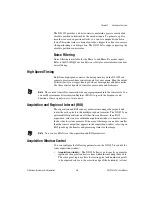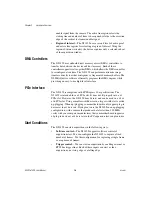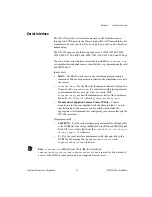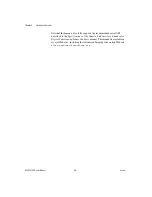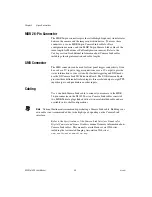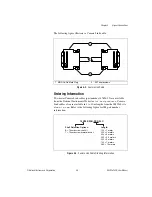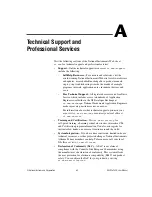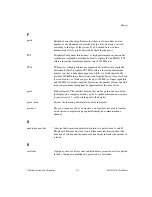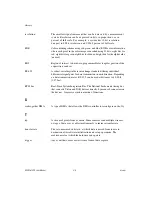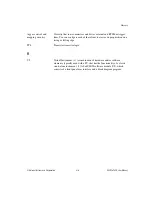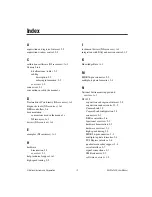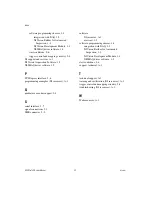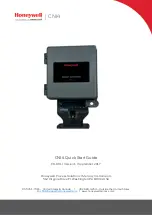
Chapter 2
Hardware Overview
©
National Instruments Corporation
2-7
Serial Interface
The NI 1429 provides serial communication to and from the camera
through two LVDS pairs in the Camera Link cable. All Camera Link serial
communication uses one start bit, one stop bit, no parity, and no hardware
handshaking.
The NI 1429 supports the following baud rates: 115200, 56000, 38400,
19200, 9600, 7200, 4800, 3600, 2400, 2000, 1800, 1200, 600, and 300 bps.
You can use the serial interface interactively with MAX,
clsercon.exe
,
or a manufacturer supplied camera control utility, or programmatically with
LabVIEW and C.
Interactively:
•
MAX
—Use MAX with a camera file containing preprogrammed
commands. When an acquisition is initiated, the commands are sent to
the camera.
•
clsercon.exe
—Use the National Instruments terminal emulator for
Camera Link,
clsercon.exe
, if a camera file with preprogrammed
serial commands does not exist for your camera. With
clsercon.exe
, you can still communicate serially with your camera.
From the
<NI-IMAQ>\bin
directory, access
clsercon.exe
.
•
Manufacturer Supplied Camera Control Utility
—Camera
manufacturers who are compliant with the Camera Link 1.1 or later
specification provide a camera control utility which sends the
appropriate serial commands for configuring your camera through the
NI 1429 serial port.
Programmatically:
•
LabVIEW
—Use the serial interface programmatically, through calls
to the NI-IMAQ driver using the IMAQ Serial Write and IMAQ Serial
Read VIs. Access these files from the
<LabVIEW>\vi.lib\vision\
driver\imaqll.llb
directory.
•
C
—Use the serial interface programmatically, through calls to the
NI-IMAQ driver using the
imgSessionSerialWrite
and
imgSessionSerialRead
functions.
Note
clsercon.exe
, IMAQ Serial Write, IMAQ Serial Read,
imgSessionSerialWrite
, and
imgSessionSerialRead
are used for direct manual
access of the NI 1429 serial port and are not required for most users.













